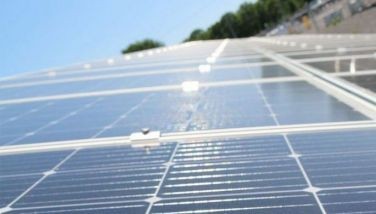World Bank urges Phl to pursue export product diversification
MANILA, Philippines - The Philippines needs to reduce reliance on electronic exports and diversify into other products to sustain overall export growth.
This recommendation was given by the World Bank’s Philippines Quarterly Update in a special focus titled “Philippine Exports: Where Do They Stand” released on Tuesday.
The financial institution projected Philippine export growth reaching just 2.5 percent in 2012 from this year’s one percent. For electronic exports, the industry forecasts an 18-percent contraction this year and possibly extending to 2012.
“Export diversification has improved in terms of market destination but not in terms of product line. Product diversification continues to pose a challenge,” the report said.
The World Bank pointed out that the global market share of semiconductors, the country’s main export, has continued to decline.
It partly attributed this to the adverse external environment, changing technology that the country has yet to fully adopt, and stagnant physical capital per worker.
The decline in Philippine market share reflects rapid growth of Korean, Singaporean and Chinese semiconductor exports and growing demand for new generation electronics such as tablet computers and smart phones, it added.
“This suggests a further deceleration of Philippine semiconductor exports in the medium term,” the report noted. “To improve growth prospects, industries would have to align its business to the new technology and demand or diversify into other products.”
With the lower sales of electronic products abroad, overall export growth has been buoyed by non-electronics exports.
Non-electronic exports grew by almost 30 percent in the first three quarters of 2011. Likewise, its share to total exports had risen from just 30 percent in 2007 to 50 percent in October 2011.
“This positive trend runs counter to the experience in 2008-09 in which non-electronic exports also collapsed,” it said.
To sustain overall export growth, the World Bank urged the Philippines to increase intra-regional trade and improve trade with countries with higher growth prospects such as the so-called BRICS excluding China. These are Brazil, Russia, India and South Africa.
It must also move towards a more balanced trade across partners to mitigate the effects of reduced trade due to economic slowdown and supply chain disruptions such as those in Japan and Thailand.
“To achieve these, improving the country’s business environment, in particular in non-PEZA (Philippine Economic Zone Authority) areas, it is essential to boost investments in both physical and human capital and encourage innovations to allow the country to move up the value-chain and expand product diversity,” it added.
In the same report, the World Bank projected the Philippine economy to improve to 4.2 percent in 2012 from this year’s 3.7 percent.
“Higher 2012 growth hinges on improvement in exports, acceleration of PPP (public-private partnership) projects and private sector investment, and a full recovery of public spending with possibly a medium-size fiscal stimulus,” it said.
- Latest
- Trending




























